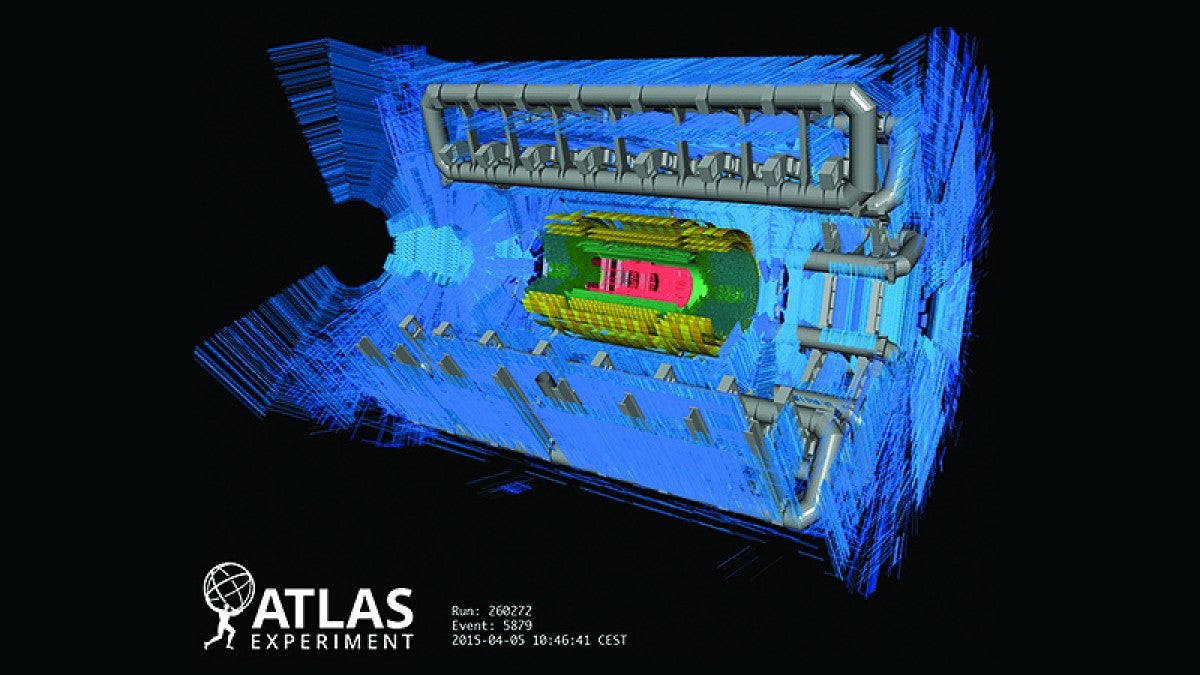When high-energy collisions resume at Europe's Large Hadron Collider, University of Oregon physicists will be among a group searching for evidence of dark matter particles as new experiments enter uncharted territory.
The particle collider, the world's most-powerful particle accelerator, runs in a 17-mile-circumference loop under the Switzerland-France border. The LHC was restarted April 5 after a two-year shutdown for upgrades.
"If all goes well, we expect the first collisions early in May, and data-taking will proceed throughout the year at a center-of-mass energy of 13 TeV," said David Strom, a UO particle physicist who was trigger coordinator of the ATLAS collaboration that found the elusive Higgs boson. "This is a considerable increase over the 8 TeV that we had in 2012."
TeV refers to tera-electron-volts; one TeV is 1 trillion electron volts. The jump in power is expected to double the previous level of energy produced at the Large Hadron Collider.

Dark matter particles that might be produced in the collider, Strom said, may provide clues when observing remnants of collisions of cosmic rays. Deep-space observations are being done in projects using the Fermi Gamma-ray Space Telescope and the Alpha Magnetic Spectrometer aboard the International Space Station.
"We know from studies of galaxy dynamics and from observations of the cosmic microwave background that much of the matter in galaxies is not composed of any of the known particles," Strom said. "At this moment there is a very confused situation with contradictory information, which makes it an ideal time to be looking at the new data from the LHC. There are a huge number of different ways dark matter might show up in the ATLAS experiment, and it is really hard to know where to focus."
The search by the UO team is split. Stephanie Majewski, a particle physicist who was involved in hardware upgrades of the ATLAS detector, will focus on the theory of supersymmetry with help from her graduate students and postdoctoral fellows. Another UO team will look for the indirect effects of any new physics on the enhanced presence of rare decays of the top quark. UO scientists also will pursue the idea that suggests multiple Higgs bosons would allow scientists to find dark matter through its coupling to hypothetical Higgs bosons.
"We are hopeful that we will find a particle explanation for dark matter in future runs of the LHC, but there are no guarantees," Strom said.
Another goal of future LHC runs is to make detailed studies of the Higgs boson, he added. "Many of us suspect that the Higgs boson may be a portal to physics beyond the standard model. To confirm this we need to measure its properties accurately, and this will require an enormous amount of data."
From August to March, during the final months of the LHC upgrade, Strom served as co-leader of the ATLAS Trigger and Data Acquisition system. In March, he began a one-year term as overall project leader.
Last October, the UO's Eric Torrence, an experimental high-energy physicist, began a one-year term as coordinator of data preparation for the ATLAS project. Torrence had a lead role in data reconstruction efforts related to injection tests, or "splash events," that were part of restarting the collider on April 5.
James Brau, professor of physics and head of the UO Center for High Energy Physics, heads the large UO contingent of faculty, postdoctoral researchers and graduate students at the LHC.


